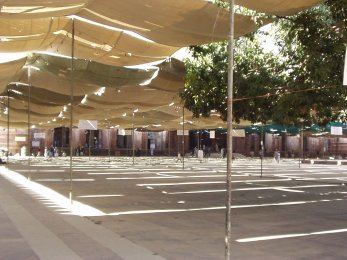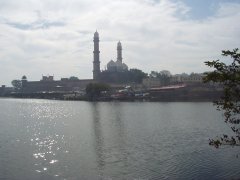the Islamic Missionary Movement of the Tablighi Jama`at in India and Pakistan and Its Vision of Society
|
|
(2001-03)
| |
The Project looks at ideas and practices of this Islamic group which devoted itself to the 'internal mission'. The group intends to reaffirm Muslim in the correct doctrines and practices of the faith. The Tablighi movement came into being in India in 1926. It was founded there by Muhammad Ilyas (1885-1944). Their followers are Muslims from all walks of life who become lay preachers. For this purpose they meet, mostly on weekends, to undertake joint preaching tours to quarters and localities where Muslims live. They may head for their immediate environment or to far-away regions, even to foreign countries.
Conducting case studies through interviews and literary research, the project looks into the ideas and concepts of an Islamic society among the Tablighis. Two context situations have been selected for this, the universities at Aligarh (India) and Lahore (Pakistan) and also their annual congregations (ijtimah) in Bhopal (India) and Raiwind (Pakistan). Their internal organisation and the conduct of the missionary work are at the centre of the inquiry as they are little covered in research publications so far.
 |
Their social attitudes constitute another line of inquiry dealing with issues such as the media (television, newspapers, cinema), computers, work, education, women and children. Differences in conduct between Tablighis in India and Pakistan will also be considered here.
While the Tablighis in India have to take into account the close cohabitation with other religious communities where Muslims constitute a minority of about 14 percent, they can rely on the Muslim majority in Pakistan.
 |
The Tablighis are strongly influenced by the Deoband tradition, named after the famous Islamic seminary in north India. Their relationship with groups such as the Jama`at-i Islami and the Barelwis is tense at times, for entirely different reasons. Being purist Sunnites they largely keep a distance to Shiites andshare inhibitions against the Ahmadis.
 |
Field research was conducted in India and Pakistan in 2001-02. For a brief review of the Pakistan-related research see next page. The project is to complete with a research monograph on the subject. Research articles and lectures on the subject are listed with publications.
Questions and remarks may be sent directly to the researcher: dreetz@rz.hu-berlin.de .
(c) Copyright 2002 for the pictures: Dietrich Reetz - permission to use them cannot be granted at this stage of the project. Updated Jan. 8, 2002.